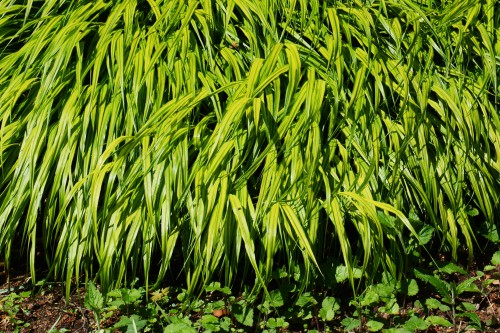Japanese forest grass, also known as Hakone grass or Hakonechloa, is a breathtaking grass that makes a garden, hedge, or yard plush all year round. In order to maintain that perennial beauty, it’s important to consider what’s planted next to this grass.
The top 10 Japanese forest grass companion plants serve both a practical and aesthetically pleasing purpose for your garden or yard.
While Japanese forest grass is easy to care for, it’s pretty picky in terms of the amount of sun it gets and the soil conditions it prefers. As such, finding plants that like living the same way is the ideal goal.
The companion plants below range from plants with flowers, trees, shrubs, and more, so you have quite a few options based on how you want your yard to look.
Whether you choose to plant shade-loving perennials like Hosta or Brunnera, or sun-loving annuals like Marigolds or Zinnias, the right companion plants can enhance the beauty and health of your Japanese forest grass and create a stunning, cohesive landscape design.
Top 10 Japanese Forest Grass Companion Plants
Japanese forest grass can be part of a garden, a border plant, or part of a natural feature somewhere in your yard. This will likely determine which companion plants you ultimately choose to help your Japanese forest grass thrive.
More on this category:
1. Black Pine Trees
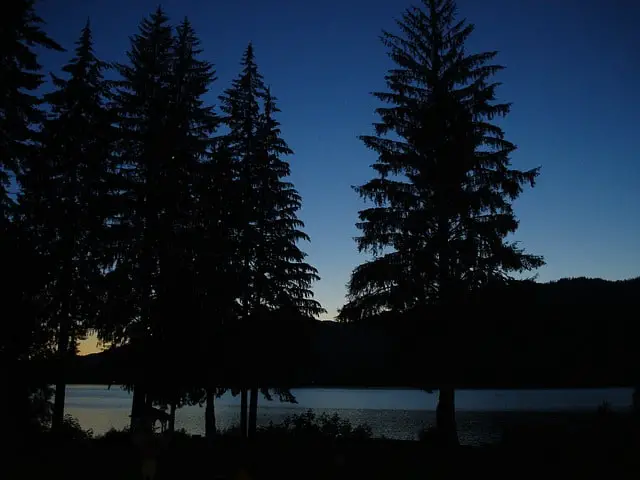
Black pine and Japanese forest grass can be found together in Japan, and for good reason; these trees give the grass adequate sun and shade, while falling needles add nutrients to the soil. If you are really looking to make over your yard and don’t mind waiting for a tree to grow, the black pine is a great choice.
Mature Size: While this tree can reach heights over 100 meters, it doesn’t usually grow that large outside of Japan.
Flowering: The black pine tree should be planted in the spring.
Key Features: The black pine grows flat at the top with age, featuring dark gray or black bark and green pine needles.
2. Hellebores
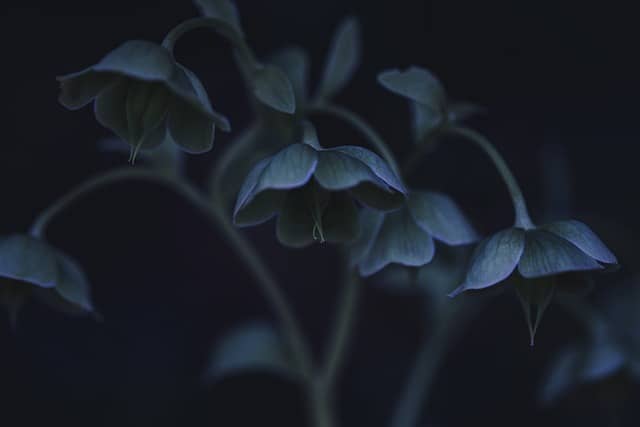
Hellebore flowers are gorgeous perennial flowers that pop up during the late winter and early spring, but the greenery sticks around all year. These flowers help keep a lot of animals away, making sure your Japanese forest grass doesn’t become deer or rabbit food.
Mature Size: When mature, hellebores can grow between one and two feet tall, and can spread that wide too.
Flowering: Hellebores can be planted anywhere from late in the fall to the beginning of spring.
Key Features: Colorful flowers with petals that lean inwards towards the middle, sitting on top of long, green stems.
3. Geraniums
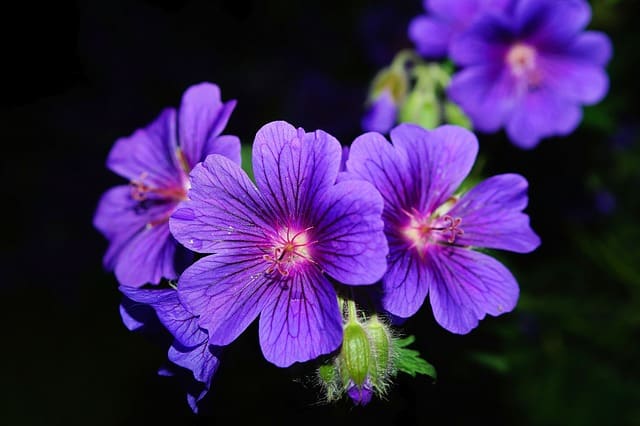
Geraniums are great because they’re hardy and easy to take care of. You can find geraniums with a beautiful array of colorful flowers and lots of plush greenery to fill out a garden nicely. They can also help protect your Japanese forest grass from some common pests and illnesses.
Mature Size: The mature size of geraniums vary greatly depending on the variety you choose; they can grow between four to 48 inches tall.
Flowering: Once the final frost of winter is completely gone, you can plant geraniums right after.
Key Features: Geraniums are bundles of green leaves featuring colorful flowers on top, ranging from reds to pinks to purples and beyond.
4. Rhododendrons

The rhododendron shrub likes the same type of soil that Japanese forest grass likes, and also offers a bit of shade for your grass when needed. Japanese forest grass can add a nice border around your rhododendron, which grows some very beautiful flowers.
From afar, this shrub can mimic some of the beauty of a cherry blossom tree.
Mature Size: A mature rhododendron can reach heights up to 25 feet.
Flowering: Spring is the best season to plant this shrub, but time of year could vary depending on the variety.
Key Features: Large branches with green leaves and flowers that range from purples to reds and beyond.
5. Columbine
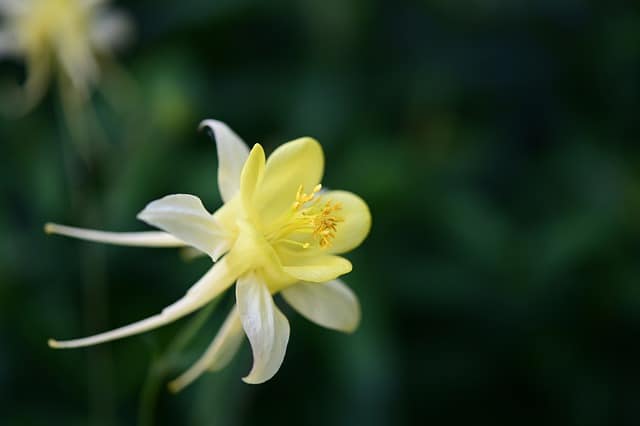
If you want a lot of color in your yard, columbine flowers are a great choice. This flower can be found in all sorts of colors, and its delicacy perfectly mimics the grass. Furthermore, these flowers bring hummingbirds around for pollination, which is of great benefit to any kind of garden.
Mature Size: A columbine plant can grow between one and two feet tall when mature.
Flowering: Columbine flowers can be planted early in the spring or in the fall under certain conditions.
Key Features: Several colorful flowers grow close to each other in columbine plants, with small, rounded petals.
6. Coral Bells

Coral bells bring color and vibrancy to your garden, but they also help attract helpful pollinators to your plants. There are a few varieties of this plant, with the most popular varieties boasting dark purple leaves or stalks of purple flowers. The contrast in color of this plant and Japanese forest grass is truly spectacular.
Mature Size: Coral bells can grow between eight and 18 inches tall.
Flowering: You can either plant coral bells late in the fall before winter comes, or early in the spring.
Key Features: Coral bells grow in a circular cluster, with tall and thin stems featuring small bell-shaped flowers towards the top.
7. Hare’s Foot Fern
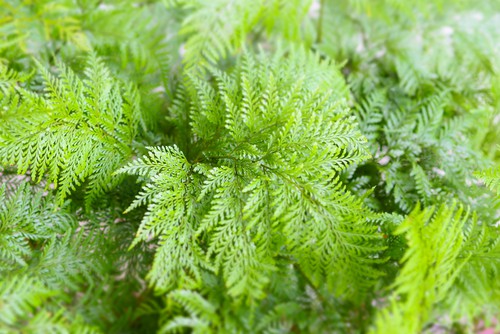
The hare’s foot fern likes living in the same conditions as Japanese forest grass does, so they can get along well in a yard with a lot of room.
They also somewhat mimic each other in how the leaves and blades both curve downward. This particular plant likes to spread itself fairly low to the ground, keeping cover of the soil so it stays moist.
Mature Size: When mature, the hare’s foot fern can reach heights between six to 24 inches.
Flowering: Hare’s foot fern should be planted in the spring.
Key Features: The leaves of these plants look like hare’s feet; hence, the name. Leaves are also feathery and range from greens to yellows to browns.
8. Hostas
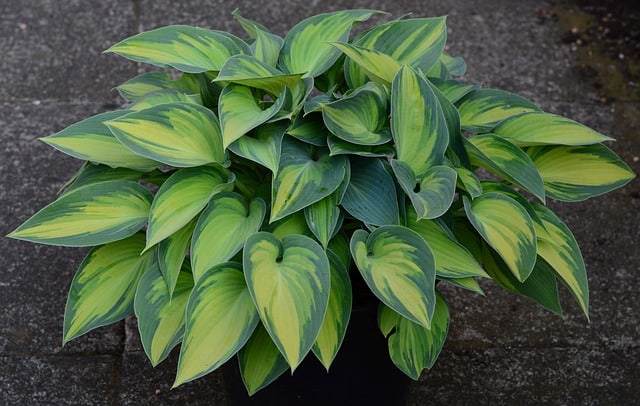
Hostas are an easygoing, adaptable plant, and they can work nicely in a garden with Japanese forest grass. You can find so many kinds of hostas to suit your taste, and each can offer shade when needed, which your grass will appreciate.
Mature Size: Depending on the hosta variety, one can grow between six and 48 inches tall, and up to six feet wide.
Flowering: You can plant hostas in the spring, or in the fall once summer weather conditions are completely over.
Key Features: Hostas come in numerous shades of green, red, and blue and feature large, waxy leaves.
9. Astilbes

Not only do the astilbes add some interesting contrast and color to your garden, but they thrive well in the same type of growing conditions as your Japanese forest grass.
Mature Size: A full-grown astilbe can range from one foot to four feet tall.
Flowering: Spring or fall are the perfect seasons to plant astilbes.
Key Features: This gorgeous plant grows tall bundles of colorful flowers in shades of pink, purple, and red.
10. Holly Fern
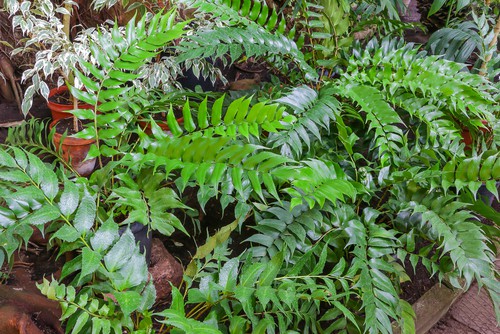
Holly fern is a stunning evergreen plant that grows tall, and can be used as filler around your grass or as a bold statement planted in the cluster. Both plants like growing in the shade and enjoy the same kind of soil, making them good garden friends.
Mature Size: The typical mature size of a holly fern is two feet tall.
Flowering: The best time to plant holly fern is in the spring.
Key Features: Holly ferns grow tall branches with small green leaves, which look similar to holly leaves, growing all along the branches.
Summary
Since Japanese forest grass is so low maintenance, the top 10 Japanese forest companion plants are meant to either offer shade or simply like growing the same way. You can truly create something unique based on your final choices, with lots of texture, different heights, and complementary colors.
Frequently Asked Questions
Can Hakonechloa Take Full Sun?
Full sun isn’t best for Japanese forest grass, as the delicate leaves can end up getting burned. This grass needs some opportunity for shade when the sun gets too strong and to avoid the soil getting dried out.
Is Japanese Forest Grass Toxic?
Japanese forest grass is not toxic for animals. If your dog happens to nibble on some while out in the yard, you don’t have to worry about them getting sick.
How Far Apart Do You Plant Japanese Forest Grass?
In order to cover ground sufficiently without impacting growth, you should plant your sections of Japanese forest grass at least 18 to 24 inches apart. For best results, you’ll want to take your clump of grass, divide it into four sections, and use each of those as a single plant.

Hey, I’m Lisa and I’ve been an avid gardener for over 30 years. I love writing, talking and living in the garden! Feel free to connect with me on my socials below

